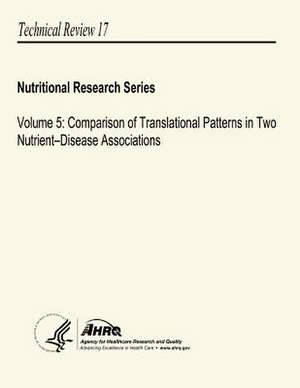Volume 5
Autor U. S. Department of Heal Human Services, Agency for Healthcare Resea And Qualityen Limba Engleză Paperback
Preț: 90.70 lei
Preț vechi: 95.48 lei
-5% Nou
Puncte Express: 136
Preț estimativ în valută:
17.36€ • 18.02$ • 14.47£
17.36€ • 18.02$ • 14.47£
Carte disponibilă
Livrare economică 01-15 martie
Preluare comenzi: 021 569.72.76
Specificații
ISBN-13: 9781490324388
ISBN-10: 1490324380
Pagini: 52
Dimensiuni: 216 x 280 x 3 mm
Greutate: 0.15 kg
Editura: CREATESPACE
ISBN-10: 1490324380
Pagini: 52
Dimensiuni: 216 x 280 x 3 mm
Greutate: 0.15 kg
Editura: CREATESPACE
